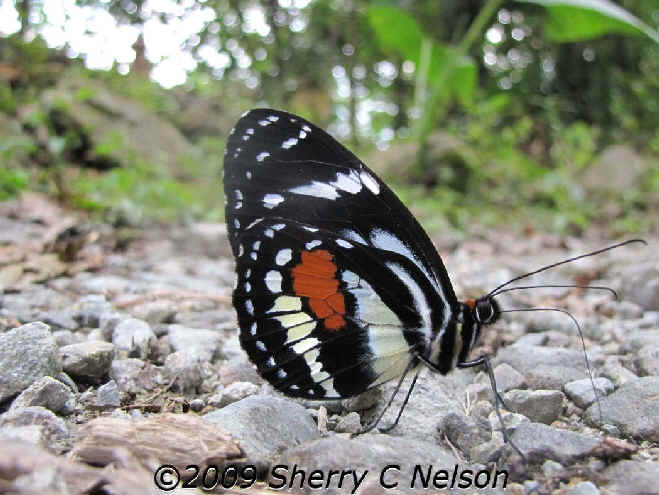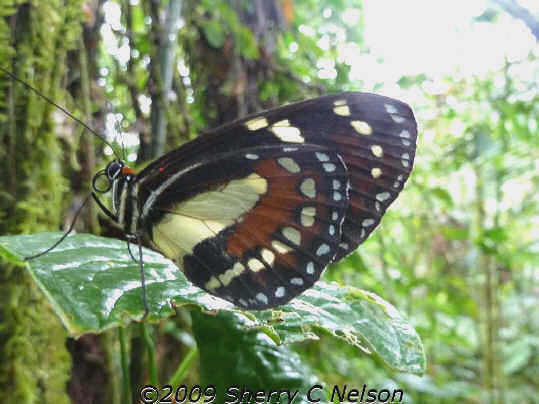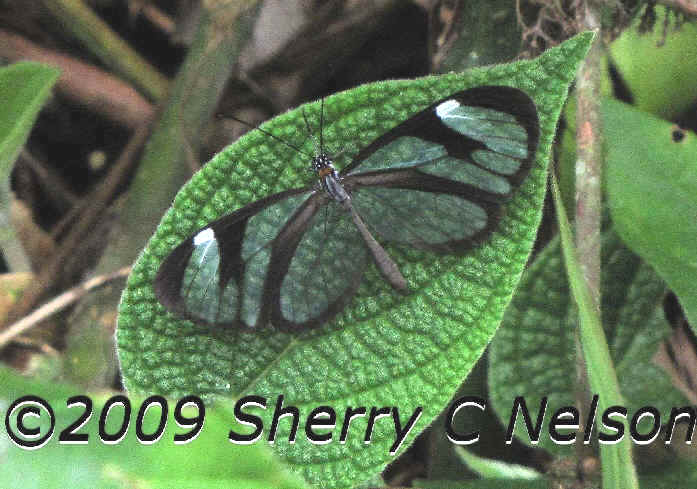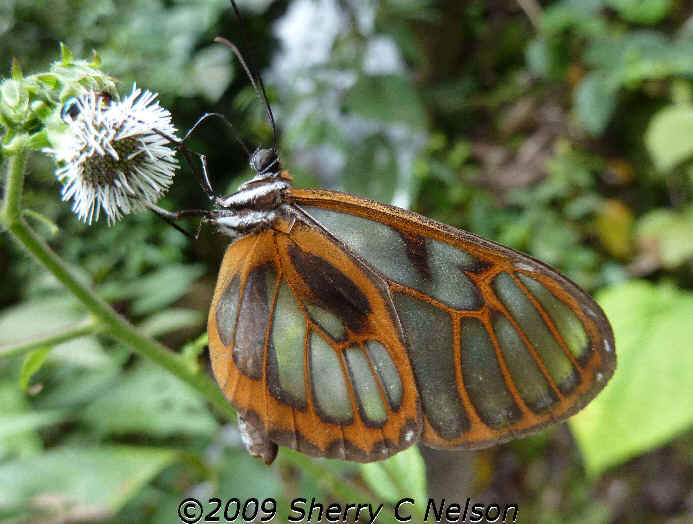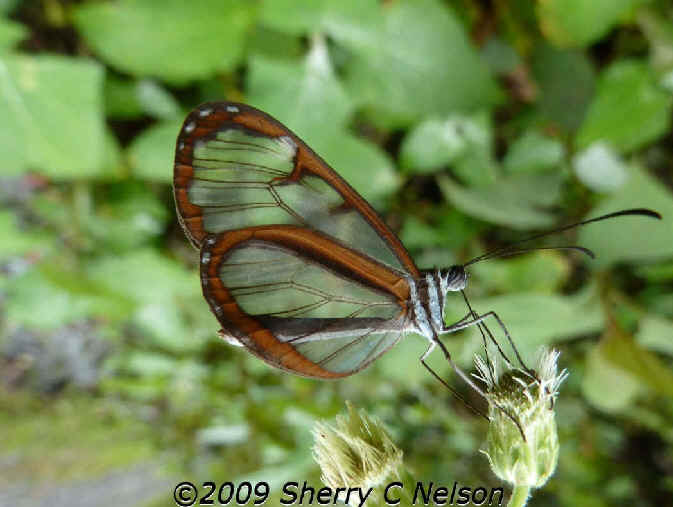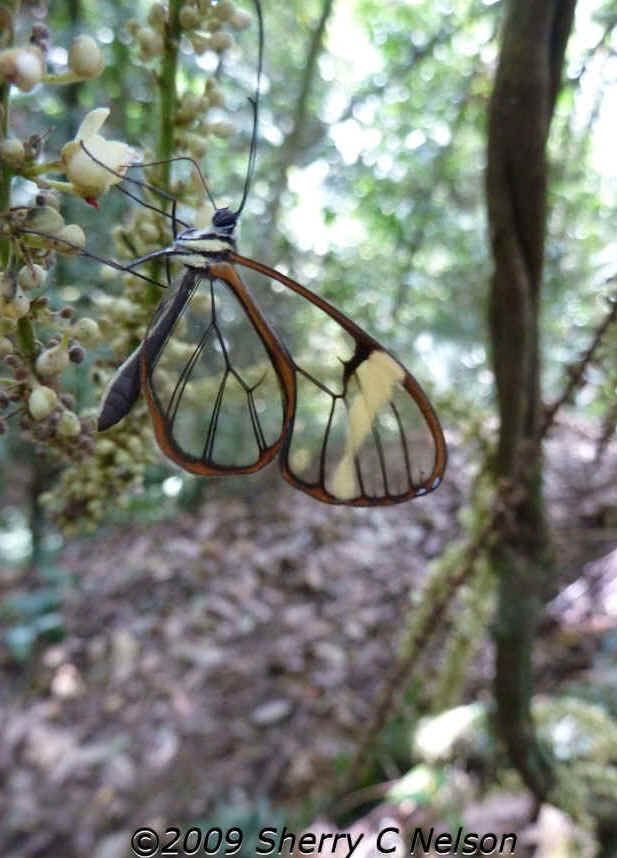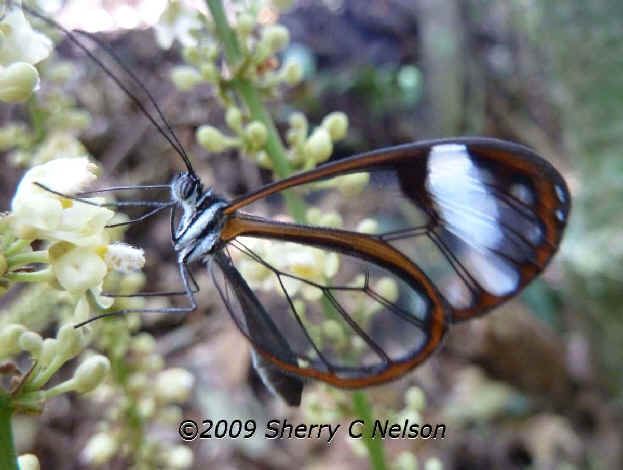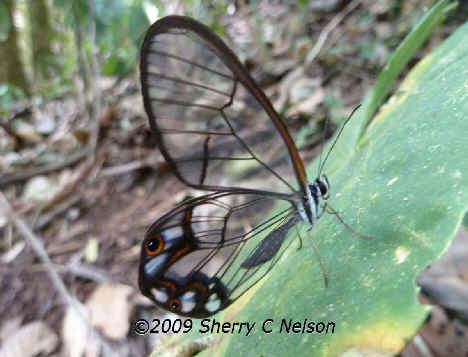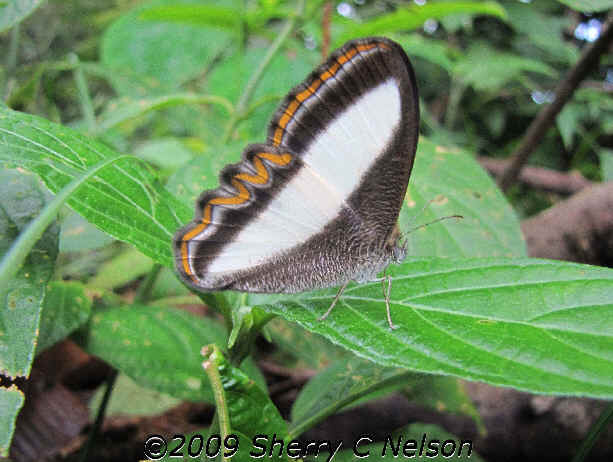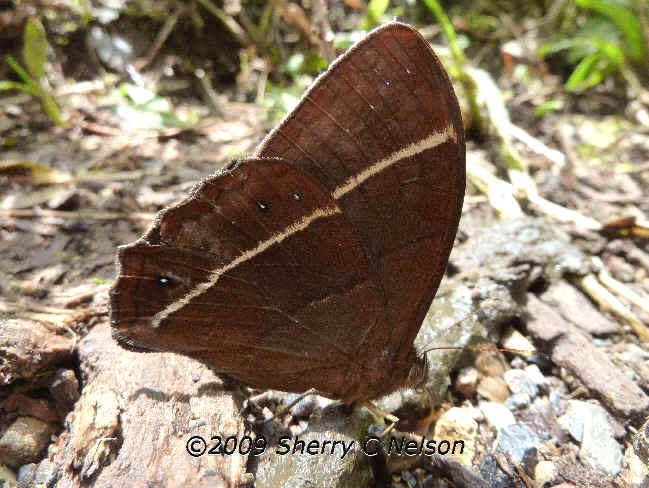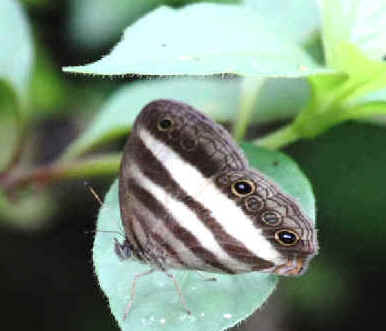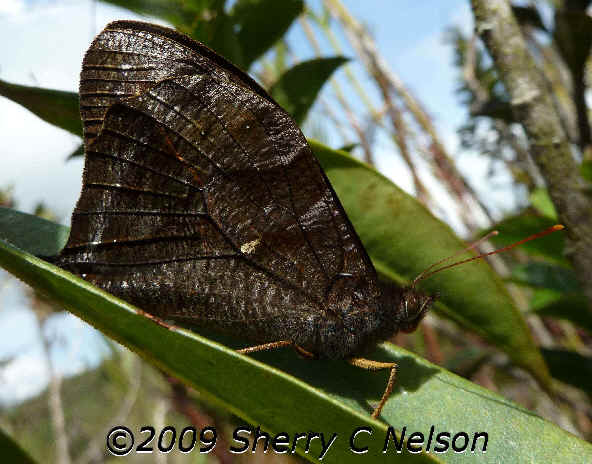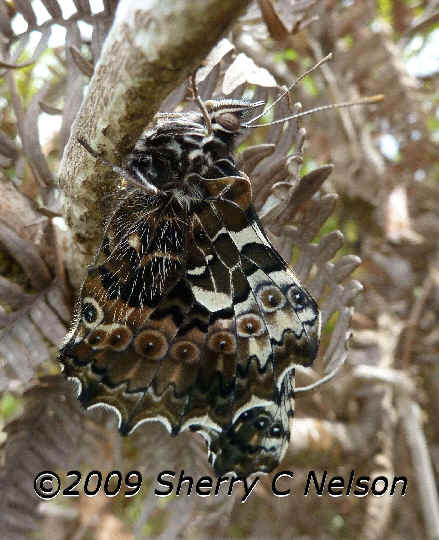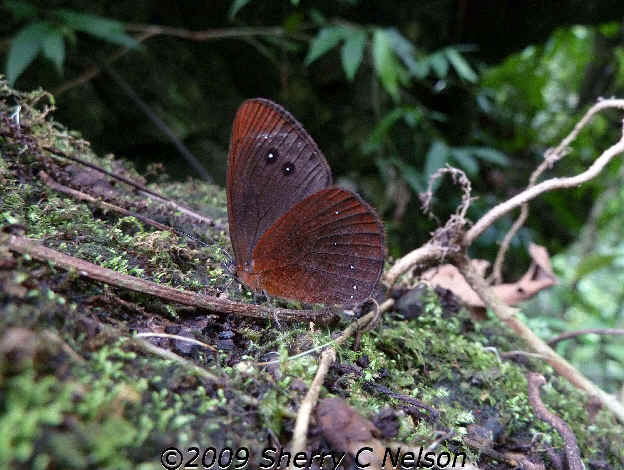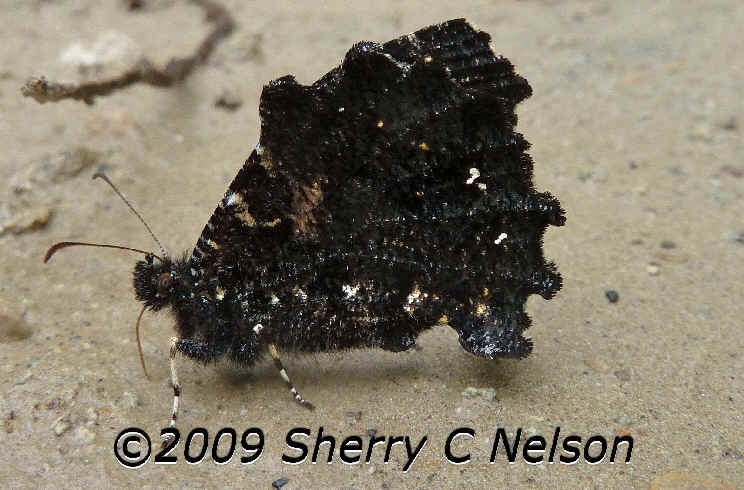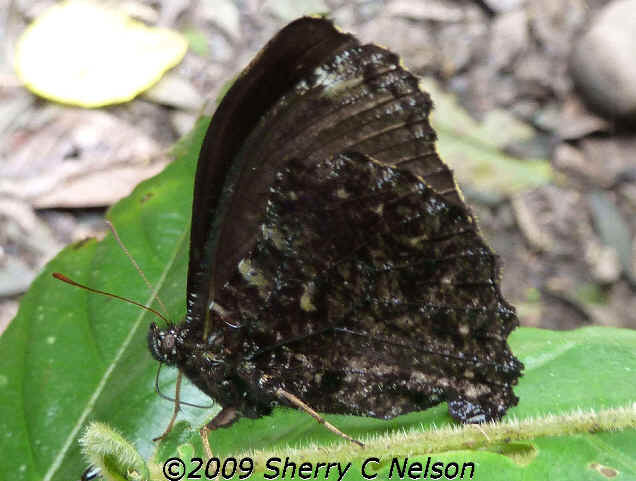
E-mail: font@focusonnature.com
Phone: Toll-free in USA 1-888-721-3555
or 302/529-1876
 |
PO
Box 9021, Wilmington, DE 19809, USA E-mail: font@focusonnature.com Phone: Toll-free in USA 1-888-721-3555 or 302/529-1876 |
Part
5 of a List
with some Photos
of
South America
Butterflies
and
Moths
Noting those during
Focus On Nature Tours
in Argentina,
Brazil,
Chile,
Ecuador,
Peru,
Venezuela
Fifth Part of a List of South America Butterflies in 6 Parts,
compiled by Armas Hill
Here, in Part #5: Nymphalidae, the Clearwings and the Satyrs
Some of the
butterflies in SATYRINAE, the Morphos and the Owl Butterflies, are in Part #4 of
this list.
Among Butterfly groupings in this list below, links to:
Clearwings: Subfamily ITHOMIINAE in the Family Nymphalidae
with the genera: Aeria,
Athesis, Athyrtis, Brevioleria, Callithomia, Dircenna, Elzunia, Episcada, Epityches,
Eutresis, Godyris, Greta, Heterosais, Hyalenna, Hyalyris, Hypoleria, Hypomenitis,
Hyposcada, Hypothyris, Ithomia,
Mcclungia, Mechanitas, Megoleria, Melinaea, Methona, Napeogenes, Oleria, Olyras, Pagyris,
Patricia, Placidina,
Pseudoscada, Pteronymia, Scada, Thyridia, Tithorea, Veladyris, Velamysta
Subfamily
SATYRINAE, Tribes
METANITINI & HAETERINI
with the genera: Cithaerias,
Dulcedo, Haetera, Manataria, Pierella, Pseudohaetera
Satyrs, Wood-nymphs, Ringlets: Subfamily SATYRINAE, Tribe SATYRINI
with the genera: Altopedaliodes, Amphidecta, Apexacuta, Archeuptychia, Argyrophorus, Auca, Caeruleuptychia, Capronnieria, Cepheuptychia, Chloreuptychia, Cissia, Corades, Corderopedaliodes, Cosmosatyrus, Daedalma, Elina, Eretris, Erichthodes, Etcheverrius, Eteona, Euptychia, Euptychoides, Fanula, Forsterinaria, Godartiana, Harjesia, Haywardella, Hermeuptychia, Junea, Lasiophila, Lymanopodia, Magneuptychia, Manataria, Manerebia, Megeuptychia, Moneuptychia, Mygona, Nelia, Neomaenas, Neopedaliodes, Neosatyrus, Oressinoma. Oxeoschistus, Pampasatyrus, Panyapedaliodes, Parapedaliodes, Parataygetis, Pareuptychia, Paryphthimoides, Pedaliodes, Pharneuptychia, Pherepedaliodes, Pierella, Posttaygetis, Praepedaliodes, Proboscis, Pronophila, Pseudodebis, Pseudoeuptychia, Pseudomaniola, Punapedaliodes, Splendeuptychia, Steroma, Stermnia, Taygetina, Taygetis, Taygetomorpha, Tetrphlebia, Thiemela, Yphthimoides, Zischkaia
Moth-butterflies, or Butterfly Moths: Families HEDYLIDAE & CASTNIIDAE with the genera: Castnia, Macrosoma
Links to other South America Butterfly
groupings in this list:
Part
#1 - Swallowtails (Papilionidae)
Part
#2 - Whites, Yellows, Sulphurs (Pieridae)
Part
#3 - Hairstreaks, Blues (Lycaenidae) & Metalmarks
(Riodinidae)
Part #4 -
Brushfoots (Nymphalidae)
other than Clearwings (Ithomiini) & most in Satyrinae
Part #6 - Skippers (Hesperiidae)
Some Photos of Butterflies and Moths during FONT Tours in Ecuador
![]()
In South America,
the countries of Colombia, Peru, Brazil, and Ecuador each have a
great number of butterfly species.
Ecuador has the greatest concentration of species per kilometer. In that
country, there are said to be 2,726 species of butterflies.
Codes relating to illustrations in
various books:
Numbers noted as (AZ:xx)
refer to pages in "Butterflies of Arizona - A Photographic
Guide", by Bob Stewart, Priscilla Brodkin, & Hank Brodkin
(with fine photographs).
Numbers noted as (BB:xx) refer to pages
in "Butterflies of Buenos Aires (Argentina)", by Gustavo Canals
Numbers noted as (C:xx) refer to pages in
"A World of Butterflies", with text by Brian Cassie, and
photographs (superb) by Kjell Sandved
Numbers noted as (D1:xx)
refer to plates in "The Butterflies of Costa Rica and their
Natural History (Volume 1): Papilionidae, Pieridae, Nymphalidae", by
Philip J. DeVries
Numbers noted as (DV:xx) refer to pages
in "Butterflies Of South America", by Bernard D'Abrera
Numbers noted as (EBE:xx) refer to pages
in "Ecuador's Butterfly Ecology", by Xavier Silva.
Numbers noted as (F:xx) refer to pages
in "The Illustrated Encyclopedia of Butterflies", by Dr. John
Feltwell
Numbers noted as (K:xx) refer to pages
in the "Kaufman Focus Guide to Butterflies of North America", by
Jim Brock & Kenn Kaufman
Numbers noted as (MCA:xx) refer to pages
in "A Swift Guide to the Butterflies of Mexico & Central
America" by Jeffrey Glassberg
Numbers noted as (MM:xx) refer to pages
in "Mariposas (Butterflies) of Missiones (Argentina)", by
Gustavo Canals
Numbers noted as (PE:xx)
refer to plates in the "Peterson Field Guides to Eastern
Butterflies", by Paul Opler & Vichai Malikul, 1998 edition.
Those noted as (PEp:xx)
refer to a page with a photograph.
Numbers noted as (PW:xx) refer to plates
in the "Peterson Field Guide to Western Butterflies", by Paul
Opler & illustrated by Amy Bartlett Wright, 1999 edition.
Those noted as (PWp:xx)
refer to a page with a photograph.
Numbers noted as (RG:xx) refer to pages
in "Butterflies of the Lower Rio Grande Valley" by Roland Wauer.
Numbers noted as (S:xx)
refer to pages in the "Smithsonian Handbook, Butterflies
& Moths", by David Carter.
Numbers noted as (WGC:xxx) refer to pages in "A Wildlife Guide to
Chile", by Sharon Chester.
Country and Regional Codes:
AR: in Argentina
ba: province of Buenos Aires
ne: northeast Argentina,
including Iguazu Falls (ARne also
on the Brazilian side at Iguazu Falls)
BR: in Brazil
mg: Mato Grosso, including the
Panatanal and north to Alta Floresta / Rio Cristalino
se: southeast Brazil
CH: in Chile
EC: in Ecuador am:
Amazonian nw: northwest EC
VE: in Venezuela
Butterflies observed during FONT tours noted by an (*) after the 2-letter
country code.
(ph): species with a photo in the FONT website
Other Links:
Upcoming FONT Birding & Nature Tours
in South America in:
Brazil
Ecuador Uruguay Venezuela Argentina
Chile
Lists & Photo Galleries of BIRDS, including those during FONT Tours in South America
Lists & Photo Galleries of MAMMALS, relating to FONT Tours in South America
Alphabetical Directory of Butterflies by Genus of those with Photos in the FONT Website
Directory of Photos in this Website
List of South American
Butterflies, Part #5
Family
NYMPHALIDAE: BRUSHFOOTS
Cosmopolitan, with subfamilies range from 8 to 25, depending upon taxonomic
treatment.
This is the most diverse family of butterflies, with approximately 6,000
known species worldwide.
Brushfoot butterflies appear 4 rather than 6-legged
as their 2 front legs are much reduced.
Subfamily ITHOMIINAE, Tribe
ITHOMIINI
This
highly diverse group has been considered a separate family, or (now by most) as
a subfamily of NYMPHALIDAE.
Many of the
butterflies in ITHOMIINI are transparent or translucid.
They can be toxic to
predators, which generates mimicry, Batesian and Mullerian.
There are some notes
pertaining to mimicry with some particular species below in the list.
ITHOMIINI can
expel pheromones that bring together males and females (and also other
species) in the forest.
They feed on flowers of Asteraceae
and Boraginaceae, especially the males, to obtain
substances for
pheromone production.
Females can be saprophytic
- for example, they feed on antbird (army ant followers) droppings.
Many ITHOMIINI
butterflies look very similar in the field, but with analysis of the
hindwing venation, the genus
can be identified rather
easily.
Most ITHOMIINI are
found in tropical and cloud forests. Their host plants include those in Solanaceae.
Genus EUTRESIS: 2
or 3 species
